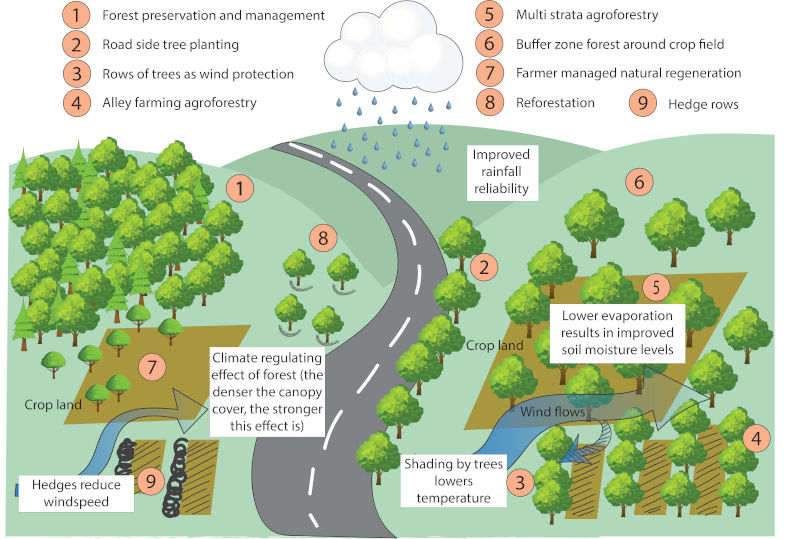Local climates are what we experience in reality: just above the land surface and below the atmospheric boundary layer. It is where humans live, and plants grow, where biodiversity and ecology happen. They result from the fine-grained localized, dynamic interplays between different surface layer processes. Here a dynamic interaction of forces determines the moisture available to the different ecosystems, the local rainfall, the presence of dew and frost, the temperatures for plant growth and germination, the vigour of soil biotic life, the capacity to fixate nitrogen by soil biota and the occurrence of pests and diseases. Local climates are where meteorology lands on earth. They consist of multiple components: solar radiation, soil moisture, soil temperature, air temperature, air humidity, local rainfall and wind direction and velocity. All components are inextricably linked to each other; changing one factor will also affect the other parts.
What is very important is that these local climates can be managed by a range of farm operations, land, water and regreening measures and nature-based solutions. These measures buffer against larger climate change trends and absorb the disruptions, and their cumulative impact can partly counterbalance the predicted 1.5 – 2.5°C temperature rise in the coming decades. The two common responses to this global climate change are to mitigate and reduce the emission of greenhouse gasses or to adapt to a world with higher temperatures, more frequent flooding, and more intense droughts. Both these responses are, in a sense, defensive: they either reduce the problem or find the best way to live with it. Yet the management and preservation of local climate management is an additional third proactive way to respond to climate change.
Moreover, good local climate management creates more conducive conditions for agricultural production and other functions. Increased agricultural productivity results from, for example, more secure moisture levels, conducive wind conditions, shelter from temperature extremes, or soil temperatures that stimulate biotic life and promote root growth.
To manage the local climate, there is a wide range of measures. Still, they all start with appreciating and preserving what is there, those landscape elements that contribute to stable and beneficial local climate – particularly local vegetation, forests, and water bodies. In addition, there is a range of other measures that can be applied, differing from area to area.


